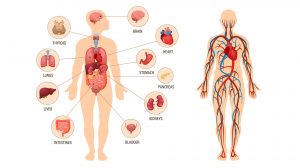Definition
noun, plural: epimastigotes
(protistology) The developmental stage or the morphological form in the lifecycle of trypanosomatids characterized by the presence of the flagellum that is located anterior of the nucleus, and emerges in the middle of the cell body and connects to the body by an undulating membrane
Supplement
Trypanosomatids have different morphological forms in their life cycle. These morphological forms are amastigote, promastigote, epimastigote, trypomastigote, opisthomastigote, and choanomastigote. These forms are based on position, length, and cell body attachment of the flagellum.
Epimastigote is a stage in the life cycle of certain trypanosomatids wherein the unicellular organism has a flagellum along the length of its cell body. The flagellum, however, is not free as that in the promastigote stage. The flagellum is connected to its cell body by an undulating membrane. Both epimastigote and trypomastigote have a flagellar structure with an undulating membrane along the body. The difference lies on the position of the flagellum where it emerges. The flagellar structure of the epimastigote cell emerges in the middle of the cell body whereas that of the trypomastigote emerges near the cephalic end of the cell body.
The terminology of epimastigote is derived from the Greek epi, meaning upon, and mastig, meaning whip in relation to the flagellum.
Synonym(s):
- crithidial (stage)
Compare:
See also:
- herpetomonas
- Trypanosomes
- Trypanosomatid
- life cycle
- protozoa
- flagellate
- trypanosome
- kinetoplast







